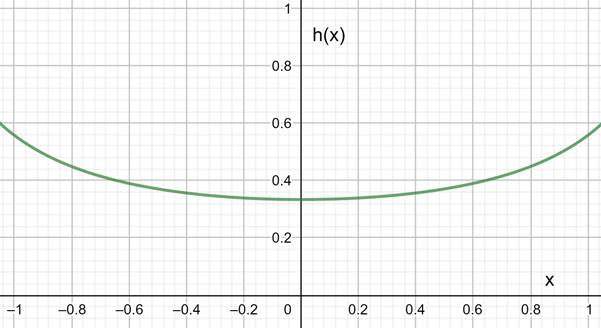
Concept explainers
a.
To evaluate : The function
a.
Answer to Problem 34E
Explanation of Solution
Given information:
Concept used:
We substitute the value of
Calculation:
b.
To guess : The value of the given function.
b.
Answer to Problem 34E
Explanation of Solution
Given information:
Formula used:
If
If
If the left-hand and right-hand limits are different, the limit does not exist.
Calculation:
Let,
From the above table we can conclude,
Therefore,
c.
To evaluate : The
c.
Answer to Problem 34E
Yes, the guess in the (b) is correct.
The value of
Explanation of Solution
Given information:
Formula used:
We substitute the value of
Calculation:
Yes, the guess in the (b) is correct.
The value of
d.
To graph : The function
d.
Explanation of Solution
Given information:
Concept used:
Graph is sketched using graphing calculator.
Graph:

The above graph of

The above graph of
In part (c) we get the value of
Chapter 13 Solutions
Precalculus: Mathematics for Calculus - 6th Edition
 Calculus: Early TranscendentalsCalculusISBN:9781285741550Author:James StewartPublisher:Cengage Learning
Calculus: Early TranscendentalsCalculusISBN:9781285741550Author:James StewartPublisher:Cengage Learning Thomas' Calculus (14th Edition)CalculusISBN:9780134438986Author:Joel R. Hass, Christopher E. Heil, Maurice D. WeirPublisher:PEARSON
Thomas' Calculus (14th Edition)CalculusISBN:9780134438986Author:Joel R. Hass, Christopher E. Heil, Maurice D. WeirPublisher:PEARSON Calculus: Early Transcendentals (3rd Edition)CalculusISBN:9780134763644Author:William L. Briggs, Lyle Cochran, Bernard Gillett, Eric SchulzPublisher:PEARSON
Calculus: Early Transcendentals (3rd Edition)CalculusISBN:9780134763644Author:William L. Briggs, Lyle Cochran, Bernard Gillett, Eric SchulzPublisher:PEARSON Calculus: Early TranscendentalsCalculusISBN:9781319050740Author:Jon Rogawski, Colin Adams, Robert FranzosaPublisher:W. H. Freeman
Calculus: Early TranscendentalsCalculusISBN:9781319050740Author:Jon Rogawski, Colin Adams, Robert FranzosaPublisher:W. H. Freeman
 Calculus: Early Transcendental FunctionsCalculusISBN:9781337552516Author:Ron Larson, Bruce H. EdwardsPublisher:Cengage Learning
Calculus: Early Transcendental FunctionsCalculusISBN:9781337552516Author:Ron Larson, Bruce H. EdwardsPublisher:Cengage Learning





